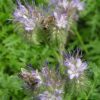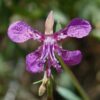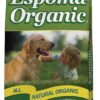When you’ve got a furry friend roaming your home, alongside your cherished leafy greens, it’s crucial to strike a balance for the well-being of both. Pets are naturally curious creatures, and plants can add a vibrant touch to your living space, but the two don’t always mix without a hitch. The coexistence of pets and plants can sometimes lead to the unwelcome issue of pets using plants as their personal bathroom, but fear not, this is a fixable problem. Here’s how you can help your pets and plants live together in harmony.
Key Takeaways
- Pets may target plants for urination due to natural instincts or behavioral issues.
- Understanding pet behavior and taking preventive measures can protect your plants.
- Non-toxic repellents and training can redirect pets from using plants as a bathroom.
- Creating a pet-friendly plant environment reduces the risks of toxicity and damage.
- Immediate action is necessary if a pet ingests a toxic plant; know when to seek veterinary care.

“Indoor cat garden ideas …” from www.pinterest.com and used with no modifications.
Zeroing in on Pet and Plant Harmony
Creating a pet-plant friendly environment requires understanding why your pet might be targeting your plants in the first place. It’s often a territorial thing – cats and dogs mark their territory by leaving their scent, and unfortunately, that can include your potted peace lily. But it’s not just about territory; it can also be a sign of anxiety or a lack of proper house-training. Identifying the root cause is the first step to finding a solution.
Why Pets Might Target Plants
There are several reasons why your pet might see your plant as a toilet rather than decor. For one, the texture of soil can be very appealing to pets, especially cats, who are used to digging in litter. Dogs, on the other hand, might be attracted to plants as a marking spot, especially if they sense other animals’ scents. Also, if a plant is at their level or in a secluded corner, it might just seem like a convenient spot to do their business.
Understanding the Pet-Plant Dynamics
When it comes to pets and plants, the dynamic is all about understanding each other’s needs and boundaries. Pets need to understand that plants are not toys or toilets, and plants need the right environment to thrive, away from harm. It’s about training your pet and also making some adjustments to your plant setup to ensure the two can coexist without any pee problems.
The Urge to Mark: Decoding Pet Behavior
Understanding why your pet is urinating on your plants is key to stopping the behavior. Marking is a natural way for pets to communicate and establish their territory. This is especially common in homes with multiple pets where they feel the need to claim certain areas as their own. In some cases, it’s not about territory at all – it could be a sign of stress or anxiety.
Canine Psychology Basics
Dogs are pack animals by nature, and they have an instinct to mark their territory. This is why you might find your dog lifting their leg by your favorite fern. It’s not out of spite; it’s simply their way of saying, “This is mine.” But this behavior can be modified with the right approach and consistent training.
- Start by closely supervising your dog around plants.
- Redirect them to an appropriate spot when you see signs they’re about to mark.
- Consistently reward them for good behavior to reinforce the habit of avoiding plants.
Remember, patience and consistency are key. Training takes time, and every pet learns at their own pace.
Feline Territory-Claiming Practices
Cats are a bit different. They may not only urinate on plants to mark territory but also because they find the soil a tempting alternative to their litter box. To deter this behavior, ensure their litter box is always clean and placed far away from your plants. Sometimes, it’s just about providing the right environment for their needs.
Safe and Dangerous Plants for Pets
It’s essential to know which plants can safely share space with your pets and which could be harmful. Some plants are toxic when ingested by animals and can cause a range of health issues from mild gastrointestinal upset to more severe conditions, even death. Before bringing a new plant into your home, do your research to ensure it’s safe for your furry friends.
Here’s a quick guide to get you started:
- Safe plants: Spider Plant, Boston Fern, African Violet
- Dangerous plants: Lilies, Sago Palm, Oleander
Most importantly, when in doubt, consult with your veterinarian or a reliable resource to make sure your pets and plants can coexist safely.
Practical Training Tips for Pets
Training is a critical component when it comes to preventing pets from using plants as a bathroom. The goal is to make them understand that plants are off-limits for their bathroom needs. This can be achieved through positive reinforcement and redirection techniques.
Redirecting Behavior With Positive Reinforcements
Positive reinforcement is all about rewarding good behavior. When your pet chooses not to interact with your plants, reward them with a treat or their favorite toy. This will help them associate staying away from plants with positive outcomes. Remember, the reward must come immediately after the good behavior to be effective.
For example, if your cat walks past the plant without a second glance, give them a quick pet or a treat right away. Or if your dog obeys a ‘leave it’ command near your plants, reward them with a game of fetch. It’s all about making the right choices more appealing than the wrong ones.
Using Barriers and Repellents Effectively
Another way to keep pets away from plants is by using barriers or non-toxic repellents. Barriers can be physical, like a pet gate or decorative stones around the base of the plant. Repellents, on the other hand, can be natural sprays made with scents that pets dislike, such as citrus or vinegar.
However, it’s crucial to ensure that any repellent you use is safe for both your pets and your plants. You don’t want to solve one problem only to create another. Always test a small area first before applying it around your plants.
Designing a Pet-Friendly Plant Environment
Creating a space where your pets and plants can coexist starts with design. The layout of your plant displays can make a big difference in keeping them safe from curious pets.
Choosing the Right Spots
Choose locations for your plants that are out of reach for your pets. Elevated plant stands, shelves, and hanging planters are great options. This way, you can display your plants without worrying about your pet using them as a litter box or knocking them over.
Additionally, consider the layout of your space. Pets often follow the same paths through your home. Place plants away from these paths to reduce the temptation for your pets to investigate.
Incorporating Plants into Pet Play Areas
While it might seem counterintuitive, integrating sturdy, non-toxic plants into areas where your pets play can actually teach them to live alongside the plants peacefully. Use sturdy, non-toxic plants to decorate these areas, and closely supervise your pets until they learn that these plants are not toys.
This can be a fun way to enrich your pet’s environment and enhance their playtime while also keeping your plants safe. Just remember to keep a close eye on the situation until you’re confident your pet has learned the boundaries.
Navigating Health Concerns
Despite our best efforts, accidents can happen, and pets may ingest plants that are not good for them. Knowing the signs of plant toxicity can be a lifesaver.
Signs of Plant Toxicity in Pets
Be on the lookout for symptoms such as vomiting, diarrhea, excessive drooling, or lethargy. These can be signs that your pet has ingested something toxic. Other symptoms might include difficulty breathing or changes in urination. If you notice any of these signs, it’s critical to act quickly.
When to Seek Veterinary Care
If you suspect your pet has ingested a toxic plant, contact your veterinarian immediately. Quick action can make all the difference. Keep a sample of the plant, if possible, as it can help the vet determine the best course of treatment.
In cases of plant ingestion, don’t wait for symptoms to appear. If you know your pet has eaten a plant that’s potentially toxic, it’s better to be safe and seek veterinary care right away.
Now that we’ve covered the bases on keeping your plants safe from pet pee, let’s address some common questions you might have. These are practical, everyday concerns that pet owners often face when trying to foster a peaceful coexistence between their pets and plants.
FAQ
How do I keep my pets from urinating on household plants?
To prevent your pets from urinating on household plants, start with basic training and ensure your pets have easy access to their designated bathroom spots. Use deterrents like citrus peels or a pet-safe bitter apple spray around your plants. Additionally, make the litter box appealing to your cat and take your dog out for regular bathroom breaks. If the behavior persists, consult with a pet behaviorist for further guidance.
What are some pet-friendly plants I can keep indoors?
When it comes to pet-friendly plants, you have several options that can add greenery to your home without posing a risk to your pets. Some safe choices include the spider plant, Boston fern, and African violet. These plants are non-toxic to both dogs and cats, making them excellent additions to a pet-friendly home.
Are citrus smells effective in keeping pets away from plants?
Yes, citrus smells are often effective in deterring pets from getting too close to your plants. Most pets dislike the strong scent of citrus, and you can use this to your advantage by placing citrus peels or a citrus-scented spray around your plants. Just make sure that any product you use is safe for pets.
Can training pads help in preventing pets from peeing on plants?
Training pads can be a useful tool, especially for puppies or senior dogs that may struggle with bladder control. Place the pads away from your plants, and encourage your dog to use them. However, training pads are not a substitute for proper house training, so be sure to continue with regular training and bathroom breaks.
What should I do if I suspect my pet has ingested a toxic plant?
If you suspect your pet has ingested a toxic plant, act immediately. Remove any plant material from your pet’s mouth, and contact your veterinarian or an emergency pet poison hotline. Be prepared to provide information about the plant and the amount ingested. Keep a sample of the plant for identification, and follow the vet’s instructions carefully.
Remember, the coexistence of pets and plants in your home doesn’t have to be a constant battle. With understanding, training, and some strategic planning, you can create a living space that is safe and enjoyable for all your family members, furry ones included. Keep these tips in mind, and you’ll be well on your way to a pee-problem-free home!





